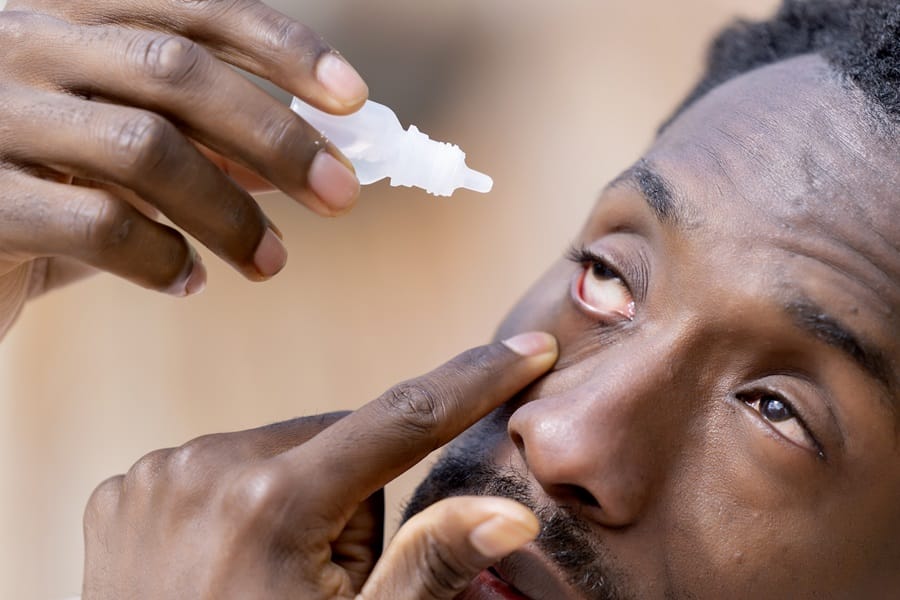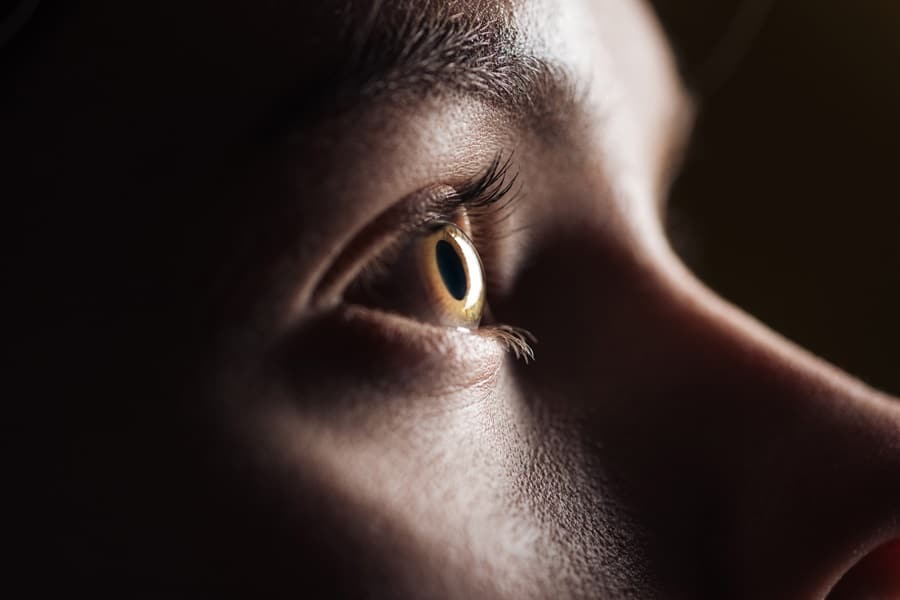Dry eyes are a common condition that occurs when the eyes do not produce enough tears or when the tears evaporate too quickly. Although it may seem like a minor inconvenience, dry eyes can cause discomfort, irritation, and even vision problems if left untreated. Understanding dry eye symptoms, treatment options, and prevention strategies is essential to maintaining eye health and overall well-being. In this blog, we’ll explore everything you need to know about dry eyes, from identifying the symptoms to effectively managing the condition.
How Do Tears Work?
Before delving deeper into dry eye syndrome, it is important to understand the role of tears in maintaining eye health. Tears play an important role in keeping the eyes moist, nourished and lubricated as well as protecting them from infection. The tear film consists of three layers: the outer oily layer, the middle aqueous layer, and the inner mucin layer. Each layer performs a specific function:
- The oily outer layer, produced by the meibomian glands in the eyelids, helps prevent evaporation of tears and maintains the stability of the tear film.
- The aqueous middle layer, produced by the lacrimal glands, provides moisture to the cornea and conjunctiva, facilitating clear vision and comfort.
- The mucin inner layer, secreted by goblet cells in the conjunctiva, helps spread tears evenly across the ocular surface and enhances their adherence to the eye. When the production, composition, or distribution of tears is disrupted, it can lead to dry eye syndrome, characterized by symptoms such as dryness, irritation, redness, and discomfort.
What are the symptoms of dry eyes:
Let’s discover the symptoms of dry eyes, which point to the discomfort, irritation, and vision problems associated with this common condition:
1) Dryness:
The most common symptom of dry eyes is a persistent feeling of dryness or grittiness in the eyes. This sensation may worsen throughout the day, especially in low-humidity environments or when performing tasks that require intense visual focus, such as reading or working on a computer.
2) Redness:
Redness of the eyes is another common symptom of dry eyes, often accompanied by a burning or stinging sensation. Blood vessels may become more prominent on the surface of the eye due to inflammation caused by insufficient tear production.
3) Blurred Vision:
Blurred vision can occur when the tear film, which helps maintain a smooth optical surface on the cornea, becomes disrupted. Without sufficient tear film, light entering the eye may scatter, causing temporary blurred vision, especially during activities that require prolonged visual concentration.
4) Sensitivity to Light:
Individuals with dry eyes may experience increased sensitivity to light, a condition known as photophobia. Bright lights, sunlight, or even glare from electronic screens can increase the discomfort and cause squinting or eye discomfort.
5) Excessive Tearing:
Paradoxically, some individuals with dry eyes may experience excessive tearing, called reflex tearing. This occurs when the eyes suddenly begin to shed tears in response to irritation or dryness, causing the eyes to water despite an inherent lack of tear film stability.
Treatment Options for Dry Eyes:
Let’s learn about the significant benefits provided by Contoura LASIK therapy, which effectively enhances visual quality, clarity, and overall vision correction results:
1) Artificial Tears:
Lubricating eye drops, also known as artificial tears, are a common first-line treatment for mild to moderate dry eyes. These drops help replenish moisture and provide temporary relief from dryness and discomfort. A variety of artificial tears are available, including preservative-free formulations for individuals with sensitive eyes or frequent use.
2) Prescription Eye Drops:
In more severe dry eye cases, prescription eye drops may be recommended to reduce inflammation and improve tear production. These medications, such as cyclosporine (Restasis) or lifitegrast (Zydra), work to suppress inflammation and promote the natural production of tears.
3) Punctal Plugs:
Punctal plugs are small silicone or gel inserts that are placed in the tear ducts to block drainage and prevent tears from draining too quickly. By maintaining more natural tears on the ocular surface, punctal plugs may help reduce dry eye symptoms and improve tear film stability.
4) Moisture Chamber Goggles:
Humidity chamber goggles are specialized eyewear designed to create a humid environment around the eyes, reducing evaporation and providing long-term relief from dryness. These glasses are especially beneficial for individuals who experience severe dry eyes due to environmental factors or certain activities.
5) Meibomian Gland Expression:
Meibomian gland dysfunction, a common cause of evaporative dry eye, occurs when oil-producing glands in the eyelids become blocked or inflamed. Meibomian gland expression performed by an eye care professional involves applying gentle pressure to the eyelids to remove trapped oil and improve tear quality.
Prevention Strategies for Dry Eyes:
Explore effective prevention strategies for dry eyes, aiming to alleviate discomfort and promote optimal eye health:
• Blink Regularly:
Remind yourself to blink regularly, especially when performing tasks that require prolonged visual concentration, such as reading or using electronic devices. Blinking helps spread tears evenly over the surface of the eyes and prevents evaporation.
• Take Breaks:
Practice the 20-20-20 rule: Every 20 minutes, take a 20-second break and look at something at least 20 feet away. This helps the eyes relax and refocus, thereby reducing stress and dryness associated with prolonged screen time.
• Maintain Humidity:
Use a humidifier to add moisture to the air in indoor environments, especially during the winter months when indoor heating can dry out the air. Optimal humidity levels help prevent excessive evaporation of tears and maintain eye comfort.
• Protect Your Eyes:
Wear protective glasses, such as wraparound sunglasses or goggles, to protect your eyes from wind, dust and other environmental irritants, which can increase dryness and irritation.
Stay Hydrated:
Drink plenty of water throughout the day to stay hydrated and maintain adequate tear production. Dehydration can contribute to dry eyes, so aim to drink at least eight glasses of water per day to support overall eye health.
Conclusion:
Dry eyes are a common condition that can cause discomfort, irritation, and vision problems if left untreated. By recognizing the symptoms of dry eyes, exploring treatment options, and implementing prevention strategies, individuals can effectively manage the condition and maintain eye health and comfort. Whether using artificial tears for temporary relief, using prescription medications for long-term management, or making simple lifestyle adjustments to promote eye hydration and comfort, there are many ways to effectively manage dry eyes.







